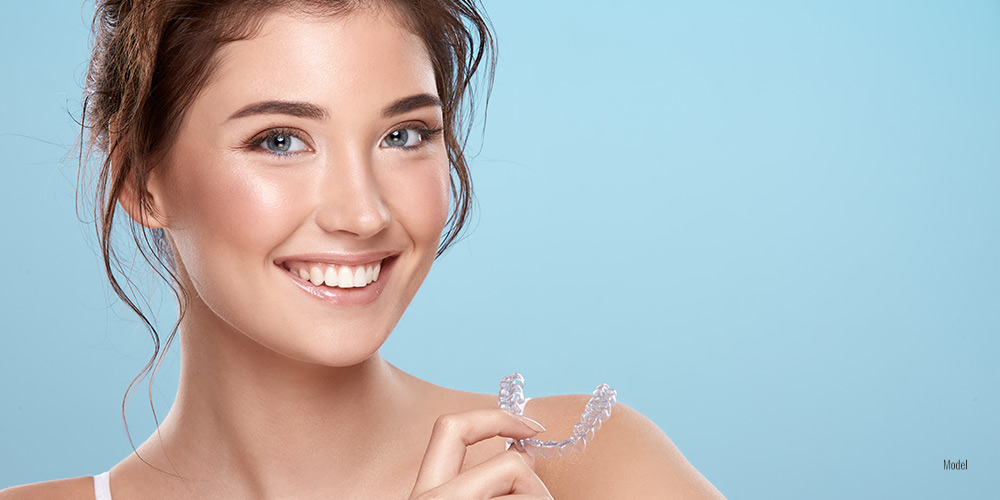
What Invisalign® Can and Can’t Fix

While Invisalign® is an excellent option for straightening teeth, many people wonder how effectively it treats other orthodontic issues. In this blog, we’ll discuss the things Invisalign® can fix and the problems that can be better fixed using traditional braces.
4 Min Read:
How Does Invisalign® Work?
Invisalign® aligners are clear, nearly invisible trays custom-fitted to your teeth. They’re made of a biocompatible thermoplastic resin that is strong enough to gradually move your teeth but comfortable enough to wear for the recommended 20-plus hours a day.
When you begin your Invisalign® treatment, your dentist uses digital imaging to create a 3D scan of your mouth, which acts as a road map for your treatment. A series of clear aligner trays are then created, each of which you’ll wear for a specific amount of time before changing to the next set of trays. Each set of aligners is designed to exert the level of force needed to move your teeth into the correct position, eventually resulting in a gorgeous smile.
While Invisalign® is an excellent option for many patients wishing to straighten their teeth, adjust their bite, or correct other cosmetic imperfections, it isn’t always the ideal alternative to traditional braces. Below, we explore some of the things Invisalign® can fix and some of the issues better suited for traditional braces.
What Invisalign® Can Treat
Crooked Teeth
The primary reason patients choose Invisalign® is to straighten teeth that are crooked or misaligned without having to deal with some of the inconveniences associated with traditional braces. With Invisalign®, you can straighten your teeth while still enjoying sticky, chewy, or crunchy foods, eliminate the hassle of wires and brackets, and still reap beautiful results.
Bite Issues
No one has a perfectly aligned bite, but some people have bite issues that can interfere with their speech, cause chipped teeth or other dental problems, or simply make them feel uncomfortable with how their teeth look. Invisalign® can fix overbites, underbites, crossbites, and open bites, moving your teeth into the proper position.
Incorrectly Spaced Teeth or Gaps
If you have gaps in your teeth, or your teeth bunch together and overlap, you have spacing problems. Both too much space and too little space between teeth can not only affect the appearance of your smile but also cause issues like gum disease or cavities because of food getting lodged in between them. Invisalign® can correct some spacing problems, depending on their complexity and severity.
Rotated Teeth
If your teeth are overcrowded, one or more teeth may rotate or tilt to fit into the space it has. Invisalign® can correct teeth that have rotated by gradually rotating them into their correct position through a series of custom-made trays.
Raising or Lowering Uneven Teeth
For some people, the unevenness in their teeth is due to their position in the jawbone. Invisalign® can help slightly raise the teeth higher (extrusion) or lower (intrusion) to produce the desired result.
Learn More About Invisalign® in Norridge and Schaumburg
If you’ve been wanting to address crooked teeth or a misaligned bite but are unsure whether traditional braces or Invisalign® will offer better results, look no further than the experts at Royal Dental Care. When you come in for a consultation, we will perform a thorough examination and offer recommendations for the treatment that will provide you with the gorgeous results you desire. To schedule an appointment, call us today at (773) 232-3929 (Norridge) or (847) 999-7620 (Schaumburg) or complete the online contact form.

